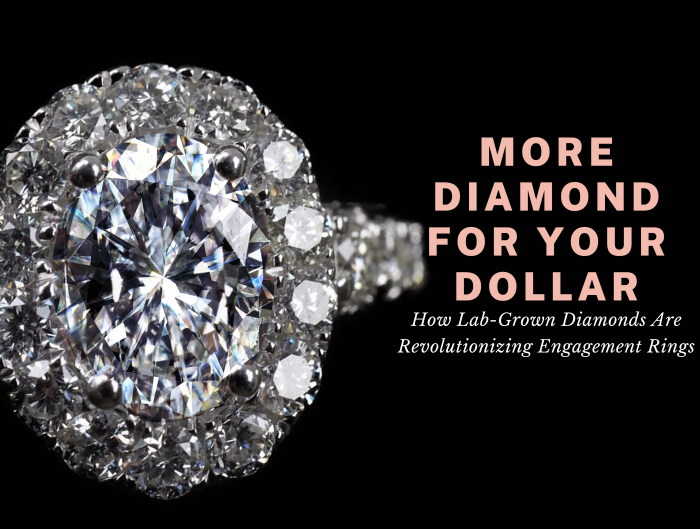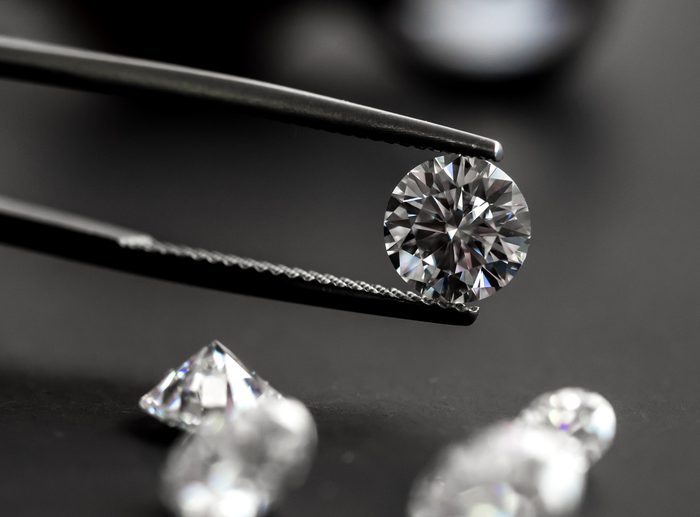There’s a lot to keep up with in jewelry news—the launch of new collections, designer collaborations, celebrity jewelry sightings, you name it. It’s no wonder some jewelry news never makes headlines, regardless of how important it may be. One such example is the recent FTC decision to update jewelry industry guidelines, which includes redefining the term “diamond.” Despite a lack of reporting on these changes, they’re actually pretty important to consumers. We’ve decoded these new guidelines for you, so you aren’t left feeling puzzled the next time you visit your local jeweler.
 The FTC formerly defined a diamond as “a natural mineral consisting essentially of pure carbon crystallized in the isometric system.” Since the recent revisions, the word “natural” has been removed from this definition, granting equal standing to diamonds that have been created in a lab. In other words, the FTC recognizes both natural and synthetic diamonds as one in the same. But are they? Though the two have the same chemical composition and very similar optical and physical properties, there are experts who maintain that the difference is still apparent under a microscope.
The industry’s reception to these new rules has been mixed. Though it may be a victory for man-made diamond manufacturers, it’s a bit of a setback for diamond mining companies such as DeBeers. Corporate interests aside, how does this new ruling directly affect you, the consumer?
The FTC formerly defined a diamond as “a natural mineral consisting essentially of pure carbon crystallized in the isometric system.” Since the recent revisions, the word “natural” has been removed from this definition, granting equal standing to diamonds that have been created in a lab. In other words, the FTC recognizes both natural and synthetic diamonds as one in the same. But are they? Though the two have the same chemical composition and very similar optical and physical properties, there are experts who maintain that the difference is still apparent under a microscope.
The industry’s reception to these new rules has been mixed. Though it may be a victory for man-made diamond manufacturers, it’s a bit of a setback for diamond mining companies such as DeBeers. Corporate interests aside, how does this new ruling directly affect you, the consumer?
What is a Diamond?
 The FTC formerly defined a diamond as “a natural mineral consisting essentially of pure carbon crystallized in the isometric system.” Since the recent revisions, the word “natural” has been removed from this definition, granting equal standing to diamonds that have been created in a lab. In other words, the FTC recognizes both natural and synthetic diamonds as one in the same. But are they? Though the two have the same chemical composition and very similar optical and physical properties, there are experts who maintain that the difference is still apparent under a microscope.
The industry’s reception to these new rules has been mixed. Though it may be a victory for man-made diamond manufacturers, it’s a bit of a setback for diamond mining companies such as DeBeers. Corporate interests aside, how does this new ruling directly affect you, the consumer?
The FTC formerly defined a diamond as “a natural mineral consisting essentially of pure carbon crystallized in the isometric system.” Since the recent revisions, the word “natural” has been removed from this definition, granting equal standing to diamonds that have been created in a lab. In other words, the FTC recognizes both natural and synthetic diamonds as one in the same. But are they? Though the two have the same chemical composition and very similar optical and physical properties, there are experts who maintain that the difference is still apparent under a microscope.
The industry’s reception to these new rules has been mixed. Though it may be a victory for man-made diamond manufacturers, it’s a bit of a setback for diamond mining companies such as DeBeers. Corporate interests aside, how does this new ruling directly affect you, the consumer?
Dismissing the Word “Synthetic”
One change mandated by the updated jewelry industry guidelines advises marketers to avoid using the term “synthetic” to describe lab-grown diamonds, as it implies that the stone is artificial. Instead, they recommend using qualifiers such as laboratory-grown, laboratory-created, or [manufacturer name]-created. Though sellers still must indicate to the consumer that the diamond was not mined from the earth, the FTC’s new ruling allows for increased ambiguity. Specifically, it authorizes the use of any phrase that “clearly and conspicuously convey[s] that the product is not a mined stone.” This seems like a fairly direct instruction, though it has some in the industry worried. Diamond manufacturers are known for their clever marketing tactics, and this increased flexibility has some wondering if their strategies will only become more deceptive. Many see this as a setback for consumers who are especially susceptible to scams and who aren’t equipped to determine if an item is being misrepresented.Simulants are Not Synthetic Diamonds
The updated jewelry industry guidelines aim to protect consumers by cracking down on companies that market simulants as synthetic diamonds. Simulants like cubic zirconia and moissanite are often falsely advertised as lab-grown diamonds despite being much less valuable. This is usually at the expense of the consumer, who is likely unaware until they try to sell their stone or have it appraised. This is a welcome change for shoppers who hopefully will have an easier time distinguishing what’s real and what’s not.Lab-Grown Diamonds Are Gemstones
Prior to the FTC’s recent ruling, man-made diamond producers were not permitted to use any of the following terms to market their products: gem, gemstone, stone, real, genuine, or birthstone. Now that they’ve recognized lab-grown diamonds as the real deal, it’s only fair that they allow manufacturers to use this language.Using the Word “Cultured”
Probably the greatest victory for the man-made diamond industry is the FTC’s decision to allow the word “cultured” to describe their lab-grown products. Their decision stems from the argument that consumers understand the word cultured to mean something that must be grown. Therefore, the FTC feels the term is sufficient enough to indicate that the diamond was not harvested from the earth, but rather was grown in a lab under controlled circumstances.What Does It All Mean?
It’s easy to see why the mined-diamond industry was unsettled by these new rulings. For starters, there are plenty who argue that lab-grown diamonds are in fact quite different from real diamonds. What makes diamonds so valuable and precious is the fact that they’re rare, and no two are exactly the same. Not to mention, in order for a diamond to make it from mine to market, it must go through a series of steps that include cutting and polishing. Diamonds that are grown in a lab can be produced in just a few weeks, at very little cost to the manufacturer. Yet, despite the fact that producing lab-grown diamonds is much easier and cheaper, manufacturers still hike up their prices to match those of natural mined diamonds. Now that lab-grown diamonds have been granted the same status as natural diamonds, this begs the question—will the value of precious, natural diamonds take a hit? Only time will tell how these changes impact the jewelry industry, but in the meantime it’s left up to the consumer to decide.Shop Splendid Natural Diamonds in San Diego
If you’re still skeptical about the idea of a lab-grown diamond, that’s quite alright. There are still plenty of beautiful, natural diamonds to cherish and enjoy, and you can find them right here at Leo Hamel Fine Jewelers. We offer a tremendous selection of dazzling diamond jewelry for every taste and budget. Whether you’re preparing to pop the question, or simply want to spoil yourself, you’re sure to find exactly what you’re looking for at Leo Hamel’s!Share
Sarah Dickey
You might also like
Why You Should Consider Lab-Grown Engagement Rings
Publish date
November 4, 2021
Lab-Grown Diamonds: More Bling for Less $
Publish date
August 27, 2021
Jewelry Capsule: Essentials that never go out of style
Publish date
March 26, 2021






